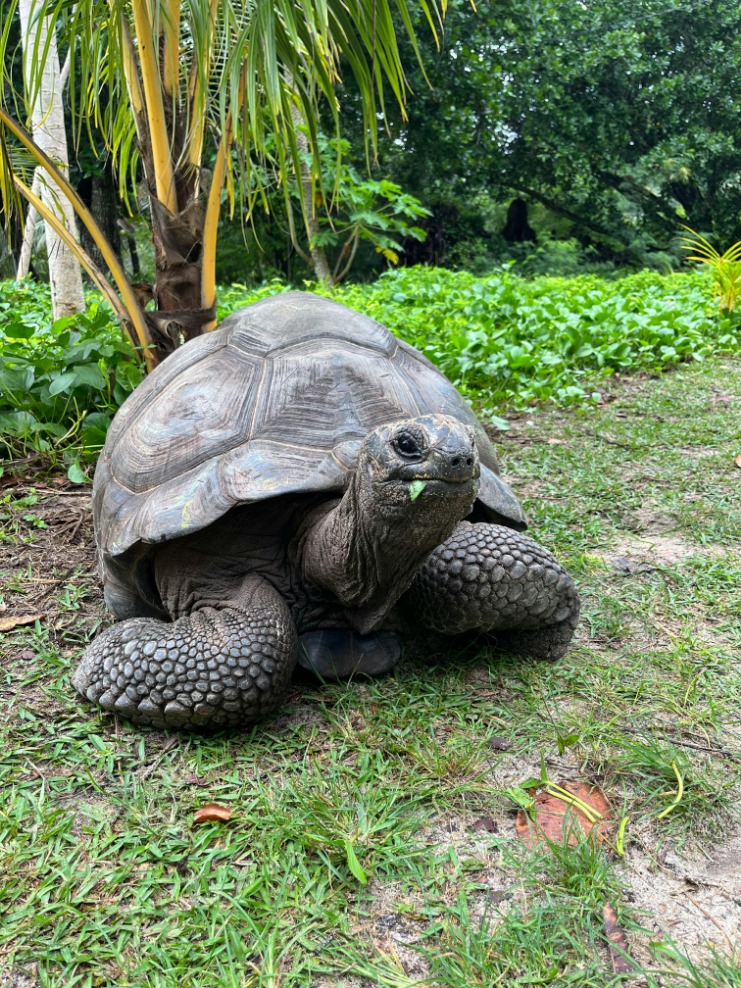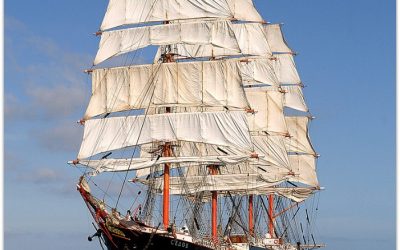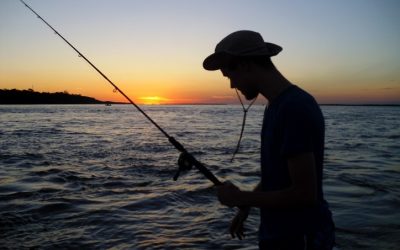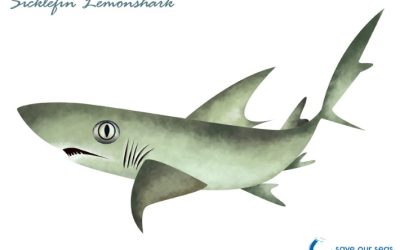Geographical Distribution and Habitat
The Aldabra tortoise, native to the Seychelles, exhibits a distinct geographical distribution primarily limited to the Aldabra Atoll. These gentle giants thrive in diverse habitats within their isolated environment, including lush grasslands, mangrove swamps, and sparse scrublands. Their adaptability to the unique ecological conditions of the atoll has played a crucial role in their survival and is a key factor in their conservation status.
Location on Aldabra Atoll
The Aldabra tortoise, scientifically known as Aldabrachelys gigantea, is primarily found on Aldabra Atoll in the Seychelles. This species is endemic to the atoll, meaning it is not naturally found anywhere else in the world. The atoll’s isolated environment provides the perfect habitat for these giant tortoises to thrive.
Aldabra Atoll is located in the Indian Ocean, northeast of Madagascar, and consists of four main islands surrounded by a lagoon. The habitat of the Aldabra tortoise includes open grasslands, coastal flats, and mangrove swamps, which offer abundant food sources and shelter. The atoll’s climate is tropical, with warm temperatures and seasonal rains that support lush vegetation, essential for the tortoise’s diet and habitat needs.
The tortoises are well-adapted to the semi-arid environment of the atoll, where they play a crucial role in the ecosystem by aiding in seed dispersal and maintaining vegetation balance. Their limited distribution makes conservation efforts vital to ensure the species’ continued survival in their natural habitat.
Preferred Habitat Types
The Aldabra tortoise, native to the Seychelles, is primarily found on the Aldabra Atoll, one of the largest coral atolls in the world. This species is well-adapted to the unique environmental conditions of the atoll, thriving in its isolated and pristine ecosystem. Their geographical distribution is limited to this specific region, making them one of the most iconic and localized tortoise species in the world.
Preferred habitat types of the Aldabra tortoise include the low-lying coral limestone islands, where they inhabit arid, semi-arid, and coastal environments. They favor open, grassy areas with sparse vegetation, which provide ample grazing opportunities. The tortoises are also often found near mangroves and freshwater lagoons, where they can access water and revamp their diets. Their habitat features a mix of xeric shrublands, grasslands, and scattered coastal dunes, all contributing to their survival and ecological role in this unique environment.
Environmental Conditions
The Aldabra tortoise, native to the Seychelles, is primarily found on the Aldabra Atoll, part of the Outer Islands in the Indian Ocean. Its geographical distribution is limited to this remote coral atoll, making it one of the most significant species for conservation efforts in the area. The habitat of the Aldabra tortoise consists predominantly of open grassy plains, shrublands, and lightly wooded areas, providing ample space for grazing and nesting. These tortoises thrive in environments that are warm and humid, with temperatures typically ranging from 24°C to 30°C (75°F to 86°F). Environmental conditions such as the presence of fresh water sources, suitable soil for burrowing, and seasonal rainfall are crucial for their survival. The natural habitat of this species has remained relatively undisturbed due to the isolated nature of the Atoll, contributing to the tortoise’s status as a symbol of conservation and ecological stability in the Seychelles.
Physical Characteristics and Morphology
The Aldabra tortoise, native to the Seychelles, is renowned for its impressive physical characteristics and distinctive morphology. These gentle giants possess a large, dome-shaped shell that provides protection and aids in temperature regulation. Their sturdy limbs and long necks help them navigate their coral atoll habitats, while their slow movements reflect their adaptation to a life of stability and longevity. Understanding their physical features offers insight into their remarkable adaptations and survival strategies in the unique ecosystem of the Seychelles.
Size and Weight
The Aldabra tortoise from Seychelles is a remarkable species known for its impressive physical characteristics and robust morphology. These tortoises are among the largest terrestrial turtles in the world, showcasing a sturdy and massive shell that provides protection and support. Their bodies are covered in rough, scaly skin, which helps them withstand the island’s harsh environment. The head is relatively small compared to their large bodies, featuring a pointed snout and strong jaws adapted for their herbivorous diet.
In terms of size, Aldabra tortoises are truly giant creatures. Adult males can reach lengths of up to 1.2 meters (about 4 feet) and weigh as much as 250 kilograms (around 550 pounds), while females are slightly smaller. These dimensions make them one of the heaviest tortoise species, with a slow growth rate that allows them to live for over a century. Their immense size and distinctive morphology have made them iconic symbols of the Seychelles’ wildlife and a crucial part of their ecosystem.
Shell Morphology
The Aldabra tortoise, native to the Seychelles, is renowned for its distinctive physical characteristics and shell morphology. This species exhibits a large, robust body with a broad, flattened carapace that provides protection and helps regulate body temperature. The shell is typically a dark brown to black color, with prominent scutes that form a high, domed appearance in males, while females tend to have a slightly flatter shell. The shell is composed of bony plates covered by horny scutes, which can show growth rings indicating age. Its limbs are sturdy and columnar, covered in rough scales, supporting their slow movement and heavy body weight. The head is relatively small compared to the shell, with strong jaws adapted for grazing tough vegetation. Overall, the unique shell morphology and physical traits of the Aldabra tortoise are key adaptations for survival in its native coral atoll habitat.
Distinctive Features
The Aldabra tortoise, native to the Seychelles, is renowned for its impressive physical characteristics and distinctive morphology that make it easily identifiable. These giant tortoises have evolved unique features suitable for their island habitat, contributing to their remarkable stature and appearance.
- Large, dome-shaped shell (carapace) that can reach up to 1.2 meters in length, providing protection and support.
- Thick, sturdy limbs with strong, conical claws used for digging and climbing.
- Long neck with notable flexibility, allowing the tortoise to reach high vegetation for feeding.
- Expanded, weighty body that can weigh up to 250 kilograms or more, making it one of the largest tortoise species.
- Head featuring a small, beak-like mouth adapted for herbivory, primarily feeding on grasses, leaves, and cactus.
- The skin is typically wrinkled and pruine, with coloration ranging from dark brown to black, providing some camouflage against predators.
- Distinctive high-domed shell shape characteristic of Aldabra giant tortoises, aiding in thermoregulation and defense.
These morphological traits, combined with their slow movements and calm demeanor, make the Aldabra tortoise a distinctive and fascinating species within the animal kingdom.
Diet and Feeding Habits
The diet and feeding habits of the Aldabra tortoise in Seychelles are essential to understanding their role in the island’s ecosystem. These gentle giants primarily graze on a variety of grasses, leaves, and fruits, which provide the necessary nutrients for their survival. Their feeding behavior is adapted to the lush, tropical environment of the islands, allowing them to efficiently process the abundant plant life. Studying their dietary patterns helps conserve this unique species and maintain the ecological balance of Seychelles’ islands.
Primary Food Sources
The Aldabra tortoise of Seychelles is primarily herbivorous, relying heavily on a diet rich in grasses, leaves, and tropical vegetation found in its natural habitat. These tortoises feed on a variety of native plants, including herbs, succulents, and fruits, which provide essential nutrients for their health and longevity. Their feeding habits are adapted to the arid and semi-arid environments of the Aldabra Atoll, where water and plant resources can be scarce. In captivity or conservation settings, their primary food sources typically include hay, leafy greens, and specialized tortoise pellets to ensure a balanced diet. The importance of their diet not only supports their growth and overall health but also aids in maintaining the ecological balance of their environment by participating in seed dispersal and vegetation control.
Foraging Behavior
The Aldabra tortoise from Seychelles exhibits unique diet and feeding habits that are closely aligned with its natural habitat. Primarily herbivorous, these tortoises consume a variety of grasses, leaves, and fruits found in their environment. They play a crucial role in maintaining the ecological balance of the islands by foraging on different plant species, which helps control vegetation growth and promotes plant diversity.
Foraging behavior in Aldabra tortoises is characterized by their slow movements and extensive roaming across open plains and scrublands. They are selective feeders, often choosing tender shoots and young leaves that provide the necessary nutrients while avoiding older, tougher vegetation. These tortoises are highly adapted to their arid and semi-Arid surroundings, and their feeding habits are essential for their survival, especially during dry seasons when food sources become limited.
Impact on Ecosystem
The diet and feeding habits of the Aldabra tortoise in Seychelles play a crucial role in shaping the local ecosystem. These tortoises are primarily herbivorous, consuming a variety of grasses, leaves, fruits, and flowers found in their natural habitat. By grazing on the abundant plant life, they help control vegetation growth and promote biodiversity, preventing any one species from becoming dominant. Their feeding behavior also facilitates seed dispersal, which contributes to plant propagation and the health of the ecosystem. Additionally, their foraging activities create space and resources for other organisms, maintaining ecological balance. The health of these tortoises and their dietary patterns are therefore integral to sustaining the fragile environment of the Seychelles, highlighting the interconnectedness between species and their habitat.
Behavior and Activity Patterns
The Aldabra tortoise, native to the Seychelles, exhibits distinctive behavior and activity patterns that are essential for its survival in the wild. Understanding these patterns provides insights into their daily routines, environmental adaptations, and social interactions. Observing their activity rhythms helps uncover how they navigate their habitat and respond to changing conditions in their environment.
Daily Routine
The Aldabra tortoise, native to the Seychelles, exhibits distinctive behavior and activity patterns that are closely tied to their environment and daily life. These tortoises are primarily diurnal, meaning they are most active during the daytime when temperatures are warmer. Their daily routine typically begins with basking in the early morning sun to regulate their body temperature, especially after cooler nights. Throughout the day, they forage for a variety of vegetation, including grasses, leaves, and fruits, demonstrating a herbivorous diet vital for their health. In the cooler late afternoon or evening, they tend to become less active, often seeking shade or hiding in their burrows to escape the heat. During mating season, activity increases as males compete for females, showing behaviors like head bobbing and rutting. Overall, their activity patterns are adapted to the Seychelles climate, ensuring their survival through periods of temperature fluctuation while maintaining essential behaviors such as feeding, mating, and resting.”
Breeding Behavior
The Aldabra tortoise, native to the Seychelles, displays distinctive behavior and activity patterns that are closely tied to its environment and lifecycle. These tortoises are primarily terrestrial and are known for their slow movements, which help conserve energy in their hot, arid habitats. They tend to be most active during the cooler parts of the day, such as early morning and late afternoon, avoiding the intense midday heat. Their activity levels are also influenced by seasonal changes, with increased movement during the rainy season when food and water are more abundant.
In terms of breeding behavior, Aldabra tortoises exhibit unique courtship rituals and reproductive strategies. Males often engage in territorial disputes and display behaviors to attract females. Once a female’s nesting period begins, she digs a nest in the ground to lay her eggs. Typically, a female can lay around 5 to 25 eggs per nesting season, which she carefully covers and abandons to incubate naturally in the warm soil. Hatchlings emerge after an incubation period of approximately four to eight months, depending on environmental conditions. The reproductive cycle of Aldabra tortoises is closely tied to rainfall and temperature, ensuring the survival of their offspring in the challenging Seychelles environment.
Communication Methods
The Aldabra tortoise, native to the Seychelles, exhibits distinctive behavior and activity patterns that are closely tied to its environment. These tortoises are primarily diurnal, most active during the cooler parts of the day such as early morning and late afternoon, while resting in shade during the hottest hours. Their activity is influenced by temperature, rainfall, and seasonal changes, with increased movement and foraging during the wet season.
When it comes to communication, Aldabra tortoises rely mainly on visual cues, scent marking, and body language to interact with one another. They do not have vocal communication like some other species, but they use gestures and postures to signal dominance, courtship, or alertness to potential threats. These behaviors facilitate social interactions within their habitat on Aldabra Atoll.
- Diurnal activity pattern, mainly active during cooler parts of the day
- Resting during high temperatures, often in shaded areas
- Increased movement and foraging during wet seasons
- Reliance on visual signals for communication
- Scent marking used to establish territory or identify individuals
- Body language to communicate dominance, reproduction, or alertness
Reproduction and Life Cycle
The aldabra tortoise, native to the Seychelles, is a remarkable example of reptilian reproduction and life cycle. Understanding how these gentle giants reproduce and grow provides insight into their survival and conservation. Their unique life cycle highlights the importance of habitat and environmental factors in supporting their population over the years.
Breeding Season
The Aldabra tortoise, native to the Seychelles, exhibits a remarkable reproductive cycle that is closely tied to its natural environment. During the breeding season, which typically occurs from November to March, male tortoises become more active and display courtship behaviors to attract females. The female lays fertilized eggs in a secure, shallow nest dug into the ground, usually producing around 8 to 25 eggs per clutch. These eggs incubate for approximately 8 to 12 months, depending on environmental conditions. The life cycle of the Aldabra tortoise spans several decades, with individuals often living over 100 years. Hatchlings emerge after incubation and face various challenges in their early years but eventually grow into the large, slow-moving herbivores characteristic of their species. The breeding season and reproductive strategies of Aldabra tortoises are vital for maintaining their population in the wild, especially given their status as a vulnerable species due to habitat loss and other environmental pressures.
Nesting Habits
The Aldabra tortoise of Seychelles exhibits a fascinating reproduction and life cycle that reflects its adaptation to the island environment. These giant tortoises are known for their long lifespan, often living over 100 years, during which they progress through various growth stages. Reproduction typically occurs during the rainy season when females lay clutches of eggs in burrows dug into the ground. A female usually lays between 10 to 30 eggs that incubation lasts for about 5 to 8 months, depending on environmental conditions. Hatchlings emerge small and vulnerable, gradually growing with a diet primarily of grasses, grasses, and other plant material found on Aldabra Atoll.
Nesting habits of the Aldabra tortoise are closely tied to their environment, with females selecting safe, well-drained sites for laying eggs. They often dig nests in sandy or loose soil, ensuring proper aeration and temperature regulation for the developing embryos. The timing of nesting is generally synchronized with favorable conditions to increase hatchling survival rates. Once hatched, young tortoises are independent and start foraging immediately, beginning their slow journey towards maturity. The life cycle of the Aldabra tortoise underscores its vital role in the island’s ecosystem and its remarkable evolutionary adaptations to the Seychelles environment.
Juvenile Development
The Aldabra tortoise, native to the Seychelles, exhibits a fascinating reproduction and life cycle. These tortoises reach sexual maturity at around 15 to 20 years of age. Mating usually occurs during the rainy season, when females lay clutches of eggs in burrows dug into the ground. Each clutch can contain 10 to 30 eggs, which incubate for approximately 8 to 14 months depending on environmental conditions. Once hatched, juvenile Aldabra tortoises are highly vulnerable and require a safe environment with abundant food and water sources. As they grow, juveniles develop slowly, with their shells gradually increasing in size and their physical features becoming more defined. Juvenile development is crucial for survival, as young tortoises learn to navigate their habitat and find food, ensuring their transition into mature adults that can contribute to the species’ longevity and conservation. The entire life cycle of the Aldabra tortoise highlights its resilience and adaptability within the unique ecosystem of the Seychelles.
Conservation Status and Threats
The conservation status of the Aldabra tortoise in Seychelles highlights the importance of protecting this unique species from various threats. As one of the rarest and largest tortoises in the world, the Aldabra giant tortoise faces challenges such as habitat loss, invasive species, and environmental changes. Understanding these threats is crucial for implementing effective conservation efforts to ensure the survival of this iconic creature.
IUCN Red List Classification
The Aldabra tortoise, native to the Seychelles, is currently classified as Vulnerable on the IUCN Red List. This status reflects concerns about its declining population due to multiple threats. Overharvesting for the pet trade, habitat destruction caused by human development, and the effects of climate change pose significant risks to their survival. Additionally, the introduction of invasive species, such as rats and predatory animals, has led to increased predation on eggs and hatchlings. Conservation efforts focus on habitat protection, captive breeding programs, and controlling invasive species to ensure the continued existence of this iconic species. The IUCN classification emphasizes the importance of ongoing monitoring and protective measures to reduce threats and safeguard the Aldabra tortoise for future generations.
Human-Induced Threats
The Aldabra Tortoise, native to the Seychelles, is classified as vulnerable due to a combination of natural and human-induced threats. Its conservation status highlights the importance of safeguarding its population and habitat to prevent further decline. Human activities have significantly contributed to the threats faced by this species, impacting its survival prospects.
Human-induced threats to the Aldabra Tortoise include habitat destruction caused by agricultural expansion, infrastructure development, and urbanization. Such activities lead to the loss and fragmentation of their natural habitats, making it difficult for tortoises to find food and suitable breeding sites. Additionally, poaching and illegal collection for the pet trade have historically posed risks to wild populations, although strict regulations now help mitigate this issue.
Introduction of invasive species, such as rats, cats, and introduced plants, also threatens the Aldabra Tortoise by competing for resources or preying on eggs and hatchlings. Climate change, driven by human activities, further exacerbates these threats by altering the tortoise’s habitat conditions, affecting food availability and breeding success. Efforts by conservation organizations and local authorities aim to address these challenges through habitat preservation, control of invasive species, and education initiatives to ensure the species’ continued survival.
Predation and Disease Concerns
The Aldabra tortoise, native to the Seychelles, is classified as vulnerable due to ongoing threats that impact its populations. Conservation status is primarily influenced by habitat loss, introduced predators, and human activities. Efforts to protect their natural habitat and control invasive species are crucial for their survival.
Predation and disease pose significant concerns for the Aldabra tortoise. While adult tortoises have few natural predators owing to their large size and tough shells, hatchlings and juveniles are vulnerable to predation by introduced species such as rats,dogs, and cats. Disease outbreaks, often exacerbated by environmental stress and invasive species, can lead to declines in population health. Managing these threats involves strict biosecurity measures, habitat restoration, and ongoing monitoring to ensure the species’ continued survival in the wild.
Conservation Efforts and Management
Conservation efforts and management play a crucial role in safeguarding the Aldabra tortoise, one of the most iconic species native to Seychelles. These majestic creatures, which have survived for centuries in their unique island habitat, face challenges from habitat loss and human activity. Effective conservation strategies are essential to ensure the continued survival of the Aldabra tortoise, involving habitat protection, breeding programs, and community engagement to preserve this remarkable species for future generations.
Protected Areas and Reserves
The conservation efforts and management of the Aldabra tortoise in Seychelles are vital for protecting this endangered species and maintaining the ecological balance of their habitat. These giant tortoises, native to the Aldabra Atoll, have seen population declines due to illegal poaching and habitat destruction, prompting the implementation of strict conservation measures. Protected areas and reserves play a crucial role in preserving their natural environment, with Aldabra being designated as a UNESCO World Heritage Site to ensure long-term protection.
Active management strategies include habitat restoration, anti-poaching patrols, and scientific research to monitor population health and ecological impact. The Seychelles government, along with international conservation organizations, manages Aldabra Reserve with regulations to minimize human impact and prevent the introduction of invasive species. These efforts aim to sustain the tortoise populations, which are not only a symbol of Seychelles’ natural heritage but also a keystone species vital for the ecosystem’s health. Continuous conservation initiatives are essential for securing the future of the Aldabra tortoise and preserving the unique biodiversity of the Seychelles islands.
Breeding and Rehabilitation Programs
The Aldabra tortoise of Seychelles is a critically important species that benefits from extensive conservation efforts and management programs aimed at ensuring its survival. These initiatives focus on habitat preservation, strict protection measures, and research to monitor population health and threats. Breeding programs, both in captivity and through habitat management, have been successful in increasing population numbers and genetic diversity. Rehabilitation programs play a vital role in rescuing injured or distressed tortoises, providing them with medical care and a safe environment before release back into the wild. Overall, the integrated approach of conservation, management, breeding, and rehabilitation is crucial for safeguarding the Aldabra tortoise for future generations.
Community Involvement and Education
Conservation efforts and management for the Aldabra Tortoise in Seychelles are critical in ensuring the survival of this remarkable species. Protected areas and dedicated reserves, such as the Aldabra Atoll, provide a safe habitat where these tortoises can thrive, free from the threats of habitat destruction and illegal poaching. Continuous monitoring and scientific research help inform effective management strategies, ensuring the population remains stable and healthy.
Community involvement plays a vital role in the conservation of the Aldabra Tortoise, with local residents participating in preservation activities and promoting sustainable practices. Educational programs targeted at both locals and tourists help raise awareness about the importance of conserving this species and its unique ecosystem. By fostering a sense of stewardship and providing opportunities for hands-on participation, these initiatives cultivate a shared responsibility for safeguarding the Aldabra Tortoise for future generations.





0 Comments